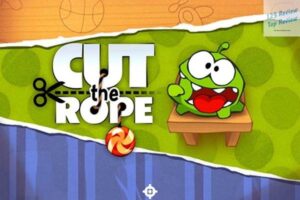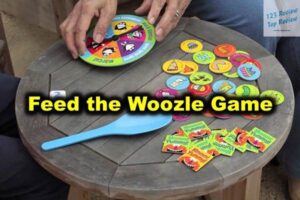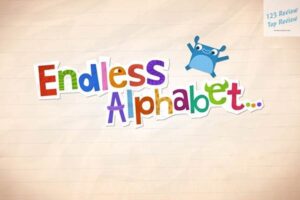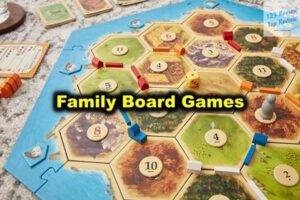Board games offer a wonderful opportunity for children to learn and grow while having fun. For 3-year-olds, these games are more than just an entertaining activity—they serve as a crucial tool for cognitive, social, and language development.
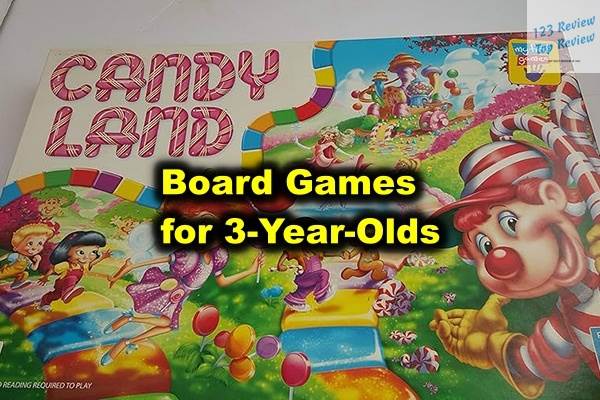
In this article, 123 Review’ll explore the myriad benefits of board games for 3-Year-Olds, delve into the different types of games suitable for this age group, discuss essential features to look for when choosing a game, highlight popular board games that have become favorites among parents and children alike, and provide practical tips for introducing these games to your little one. Finally, we’ll explore games that are suitable for family play, ensuring that everyone from toddlers to adults can enjoy some quality time together.
Benefits of Playing Board Games
Cognitive Development Through Games
Cognitive development is a key area where board games can make a significant impact. At the age of three, children are at a stage where they are beginning to understand and process information in more complex ways. Board games, with their structured rules and objectives, offer an ideal platform for this developmental stage.
For instance, many board games designed for young children involve recognizing and matching colors, shapes, or patterns. These activities enhance visual perception and help children develop their ability to distinguish between different objects and concepts. Games that require counting, such as those involving dice or counting spaces on a board, introduce basic mathematical concepts in a fun and engaging way. Children begin to grasp the idea of numbers, sequences, and simple arithmetic through these playful interactions.
Moreover, games that involve problem-solving elements, such as puzzles or strategy games, can improve memory and concentration. As children focus on the game, they learn to think critically, remember rules, and anticipate outcomes. This not only sharpens their cognitive abilities but also builds their attention span—a skill that will be invaluable as they begin formal education.
Social Skills Gained from Cooperative Play
Social development is another crucial area where board games can have a profound impact. At the age of three, children are just beginning to understand the concept of playing with others rather than alongside them. Cooperative board games, where players work together towards a common goal, are particularly effective in teaching social skills.
In these games, children learn the importance of taking turns, sharing resources, and working as a team. The collaborative nature of the game helps them understand that success is not always about being the best or winning, but about contributing to a collective effort. This can be especially beneficial for children who are still learning to navigate social interactions with peers.
Moreover, playing board games together gives parents and caregivers the opportunity to model positive social behaviors. Through gentle guidance, adults can teach children how to handle both winning and losing with grace, how to encourage and support their teammates, and how to express themselves in a respectful and considerate manner. These lessons, learned in the context of a fun and engaging game, will stay with children as they grow and encounter more complex social situations.
Enhancing Language Skills with Board Games
Language development is another area where board games can play a significant role. Many board games for 3-year-olds are designed to encourage verbal interaction, whether it’s through storytelling, following instructions, or simply discussing the game as it unfolds.
For example, games that involve storytelling or imaginative play can help children expand their vocabulary and improve their narrative skills. As they describe their actions or make up stories related to the game, they practice forming sentences, using new words, and expressing their ideas clearly. This kind of play is not only fun but also highly beneficial for developing language skills.
Additionally, many board games require players to follow verbal instructions, whether it’s from an adult reading the rules or from other players explaining what to do next. This helps children develop their listening skills and their ability to comprehend and follow directions. Over time, this can lead to better communication skills and greater confidence in expressing themselves.
Types of Board Games for 3-Year-Olds
Educational Board Games
Educational board games are specifically designed to combine learning with play, making them an excellent choice for 3-year-olds. These games often focus on teaching fundamental skills such as counting, color recognition, letter identification, and basic problem-solving.
For instance, a game that involves matching colored shapes to corresponding spaces on a board can help reinforce color recognition and fine motor skills. Similarly, games that require counting spaces or objects can introduce children to the concept of numbers and early arithmetic. These educational games often use bright colors, simple graphics, and engaging characters to capture a child’s attention and make learning enjoyable.
Moreover, educational board games can serve as a valuable complement to what children are learning at home or in preschool. They provide an interactive way to practice new skills, reinforcing lessons in a playful context. This not only aids in retention but also helps children associate learning with positive experiences, fostering a lifelong love of discovery.
Cooperative Board Games
Cooperative board games are ideal for 3-year-olds because they emphasize collaboration over competition. In these games, players work together towards a shared goal, rather than competing against each other. This approach is particularly well-suited for young children, who are still developing their understanding of teamwork and social interactions.
For example, a cooperative game might involve all players working together to collect items or solve a puzzle before time runs out. In such games, the focus is on collective success, with everyone contributing to the outcome. This teaches children the value of cooperation, patience, and mutual support—important life skills that extend beyond the game itself.
Furthermore, cooperative games can help reduce the frustration that sometimes comes with competitive play. By removing the element of “winning” or “losing,” these games create a more relaxed and inclusive atmosphere, where children can focus on having fun and learning new skills without the pressure of competition. This makes them an excellent choice for introducing young children to the world of board games.
Classic Board Games
Classic board games have been enjoyed by generations for good reason—they are simple, engaging, and adaptable to different age groups. While many classic games are designed for older children or adults, there are often simplified versions available that are perfect for 3-year-olds.
For example, games like Candy Land or Chutes and Ladders have been adapted for younger players, with colorful boards and easy-to-understand rules. These games typically involve moving a piece along a path, with progress determined by drawing cards or rolling dice. The simplicity of these games makes them accessible to young children, while the element of chance keeps the game exciting and unpredictable.
Classic board games also offer a sense of nostalgia for parents and caregivers, who may have played these games themselves as children. Introducing these timeless games to a new generation can be a bonding experience, creating a shared connection across different ages. Plus, the straightforward gameplay makes these games ideal for introducing children to basic game concepts like turn-taking, counting, and following rules.
Features to Look for in Board Games
Age Appropriateness of Games
When selecting a board game for a 3-year-old, it’s essential to ensure that the game is age-appropriate. Games designed for older children or adults may have complex rules, small pieces, or themes that are not suitable for young children. Therefore, it’s important to choose games that are specifically designed for this age group.
Look for games that are labeled for ages 3 and up. These games are typically designed with simple rules, large pieces, and themes that are engaging for young children. Age-appropriate games will also take into account the developmental stage of a 3-year-old, focusing on skills like color recognition, counting, and basic problem-solving.
Additionally, age-appropriate games are more likely to hold a child’s attention and keep them engaged. If a game is too difficult or too easy, a child may quickly lose interest. Therefore, selecting a game that matches your child’s current abilities and interests is key to ensuring a positive and enjoyable experience.
Simple and Engaging Rules
At the age of three, children are just beginning to understand the concept of structured play. As such, it’s important to choose board games with simple, easy-to-follow rules. Games that are too complex or have multiple steps may be frustrating for a young child, leading to a lack of interest or enjoyment.
The best board games for 3-year-olds are those with straightforward objectives that can be explained in a few sentences. For example, a game where the goal is to match colors or shapes, or to move a piece along a path, is likely to be more engaging for a young child than a game with complicated strategies or numerous rules.
Moreover, the rules should be flexible enough to allow for some creativity and exploration. Young children often enjoy bending the rules or making up their own variations, and a good board game will accommodate this kind of imaginative play. This flexibility not only makes the game more enjoyable but also encourages children to think creatively and develop their own ideas.
Durable and Safe Game Materials
Durability and safety are crucial considerations when selecting board games for 3-year-olds. At this age, children are still developing their fine motor skills, and game pieces may be subject to rough handling, chewing, or even throwing. Therefore, it’s important to choose games made from durable materials that can withstand this kind of treatment.
Look for games with sturdy, well-made pieces that are large enough to avoid being a choking hazard. Wooden or thick plastic pieces are often a good choice, as they are less likely to break or wear out quickly. Additionally, the materials should be non-toxic and easy to clean, as young children are likely to put pieces in their mouths or spill food and drinks during play.
Safety should always be a top priority. Ensure that the game pieces do not have sharp edges or small parts that could be dangerous for a young child. Checking for safety certifications and reading reviews from other parents can also help you choose games that are both fun and safe for your child.
Popular Board Games for 3-Year-Olds
Sneaky Snacky Squirrel
Sneaky Snacky Squirrel is a delightful game that combines fun with learning, making it a favorite among parents and children alike. In this game, players use a squirrel-shaped tweezers to pick up acorns of different colors and place them in their log. The goal is to collect one of each color acorn, and the first player to do so wins the game.
This game is excellent for developing fine motor skills, as children must carefully pick up and place the acorns using the tweezers. The game also reinforces color recognition, as players must identify and match acorns of different colors. The simple rules and quick gameplay make it perfect for 3-year-olds, who will enjoy the bright colors and playful theme.
Sneaky Snacky Squirrel also encourages turn-taking and patience, as players must wait for their turn to collect acorns. The game’s cooperative elements, such as the possibility of losing acorns to the “wind,” teach children about dealing with setbacks in a fun and supportive way. Overall, this game is a fantastic choice for introducing young children to the joys of board games.
Feed the Woozle
Feed the Woozle is a cooperative game that combines silly fun with valuable learning experiences. In this game, players work together to feed the Woozle monster using a spoon, following instructions that involve actions like marching, spinning, or hopping. The goal is to feed the Woozle a certain number of snacks before the time runs out.
This game is particularly effective at developing gross motor skills, as children must balance the spoon and move in specific ways. The cooperative nature of the game encourages teamwork and communication, as players must work together to achieve their goal. The game’s silly theme and playful instructions keep children engaged and entertained, making it a hit with 3-year-olds.
Feed the Woozle also teaches important social skills, such as following directions, taking turns, and working towards a common goal. The game’s emphasis on cooperation over competition makes it a positive and inclusive experience for young children, who will enjoy the sense of accomplishment that comes from feeding the Woozle together.
Hoot Owl Hoot
Hoot Owl Hoot is a cooperative board game where players work together to help owls return to their nest before the sun comes up. The game is simple yet engaging, with players taking turns drawing cards and moving the owls closer to their nest. If the sun rises before all the owls are safely in their nest, the game is lost, but if the owls make it back in time, everyone wins.
This game is excellent for teaching color recognition and strategic thinking, as players must decide which owl to move based on the cards they draw. The cooperative nature of the game encourages teamwork and communication, as players must work together to ensure all the owls make it back to the nest. The game’s simple rules and engaging theme make it an ideal choice for 3-year-olds.
Hoot Owl Hoot also teaches children about the concept of working towards a common goal, rather than competing against each other. This makes the game a positive and inclusive experience, where everyone has fun and feels successful. The game’s charming artwork and gentle gameplay make it a favorite among young children and their parents.
Tips for Introducing Board Games to Young Children
Choosing Age-Appropriate Games
Selecting the right game is the first step in ensuring your child has a positive experience with board games. As mentioned earlier, it’s important to choose games that are specifically designed for 3-year-olds. These games will have themes, mechanics, and difficulty levels that are appropriate for this age group, ensuring that your child can understand and enjoy the game.
When introducing a new game, take the time to explain the rules clearly and simply. Show your child how to play, and let them practice a few rounds before starting the game for real. This will help them feel more confident and comfortable, making the game more enjoyable for everyone.
Keeping Game Sessions Short
Young children have shorter attention spans, so it’s important to keep game sessions brief and engaging. Start with short games that can be completed in 10-15 minutes. This will help keep your child’s interest and prevent them from becoming bored or frustrated.
If your child enjoys the game, you can gradually increase the length of the sessions or introduce more complex games. However, always be mindful of their attention span and take breaks if needed. The goal is to create a positive and enjoyable experience, not to push your child beyond their limits.
Encouraging Turn-Taking and Patience
Board games offer a great opportunity to teach your child about patience and turn-taking. Explain the rules clearly, and remind them gently if they try to skip their turn. Praise them for waiting and encourage them to be patient, reinforcing positive behavior.
You can also use board games as an opportunity to teach other important social skills, such as sharing, cooperating, and following directions. By playing games together, you can model these behaviors and help your child learn how to interact with others in a positive and respectful way.
Games Suitable for Family Play
Games for Mixed Age Groups
Finding games that everyone in the family can enjoy, regardless of age, can make for a great bonding experience. Look for games that have simple rules but allow for more complex strategies, so older siblings and parents can also be engaged while the youngest players learn and have fun.
Games like The Sneaky Snacky Squirrel, mentioned earlier, are great for mixed age groups because they are simple enough for young children but still fun for older kids and adults. Another option is to look for games with different levels of difficulty or adjustable rules, so everyone can play at their own level.
Playing games together as a family can also help strengthen bonds and create lasting memories. It’s a great way to spend quality time together, away from screens and distractions, and to enjoy each other’s company.
Fun and Interactive Games for All
Interactive games that require movement, sounds, or storytelling can be particularly enjoyable for young children. These types of games keep everyone involved and entertained, creating a lively and inclusive atmosphere during family game night.
For example, a game that involves acting out silly actions or making funny noises can be a hit with young children, while still being fun for older kids and adults. These games often encourage creativity and imagination, making them a great choice for family play.
In conclusion, board games for 3-year-olds are more than just a source of entertainment—they are a tool for learning, growth, and family bonding. By choosing the right games and introducing them in a positive, supportive way, you can help your child develop important cognitive, social, and language skills while having fun together as a family. Whether you’re playing a classic game, trying out a new educational game, or enjoying a cooperative game together, board games offer endless opportunities for fun, learning, and connection.
